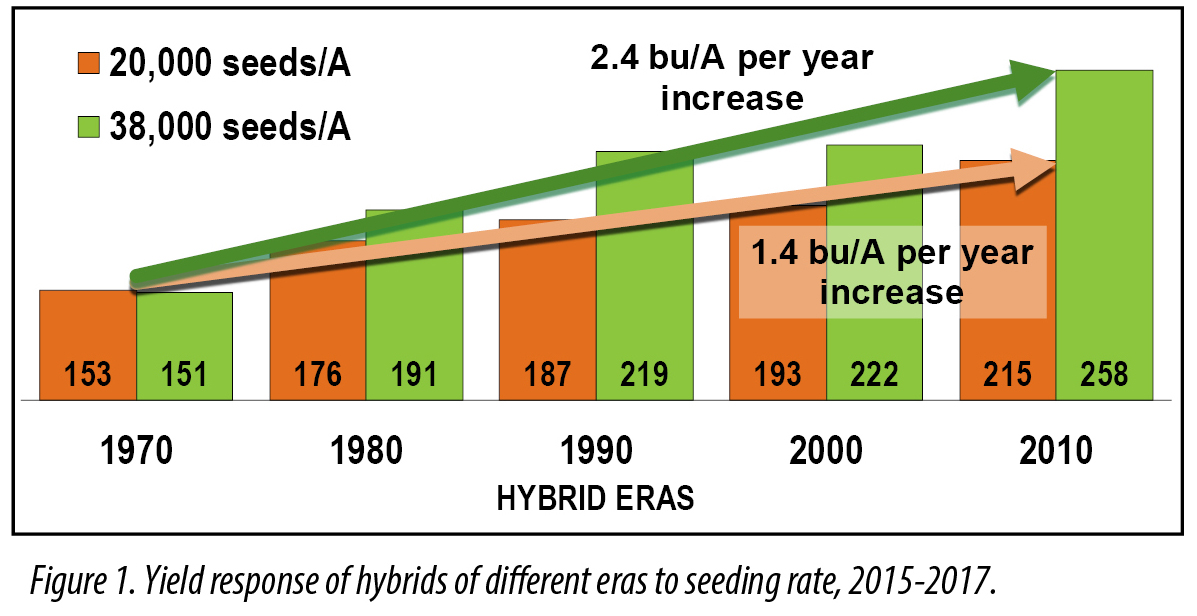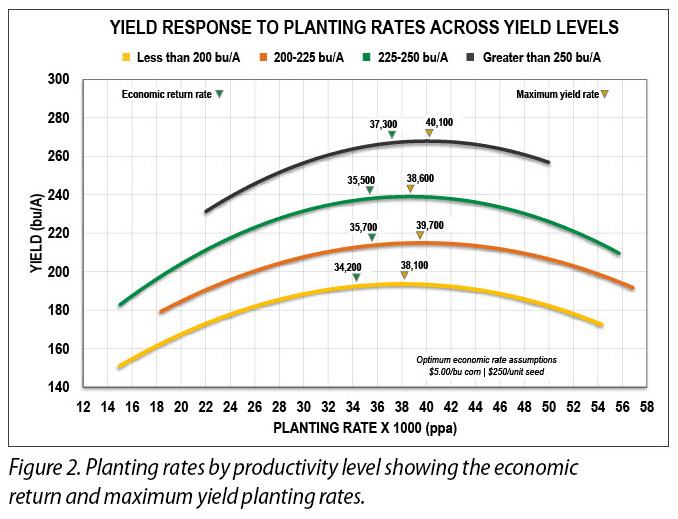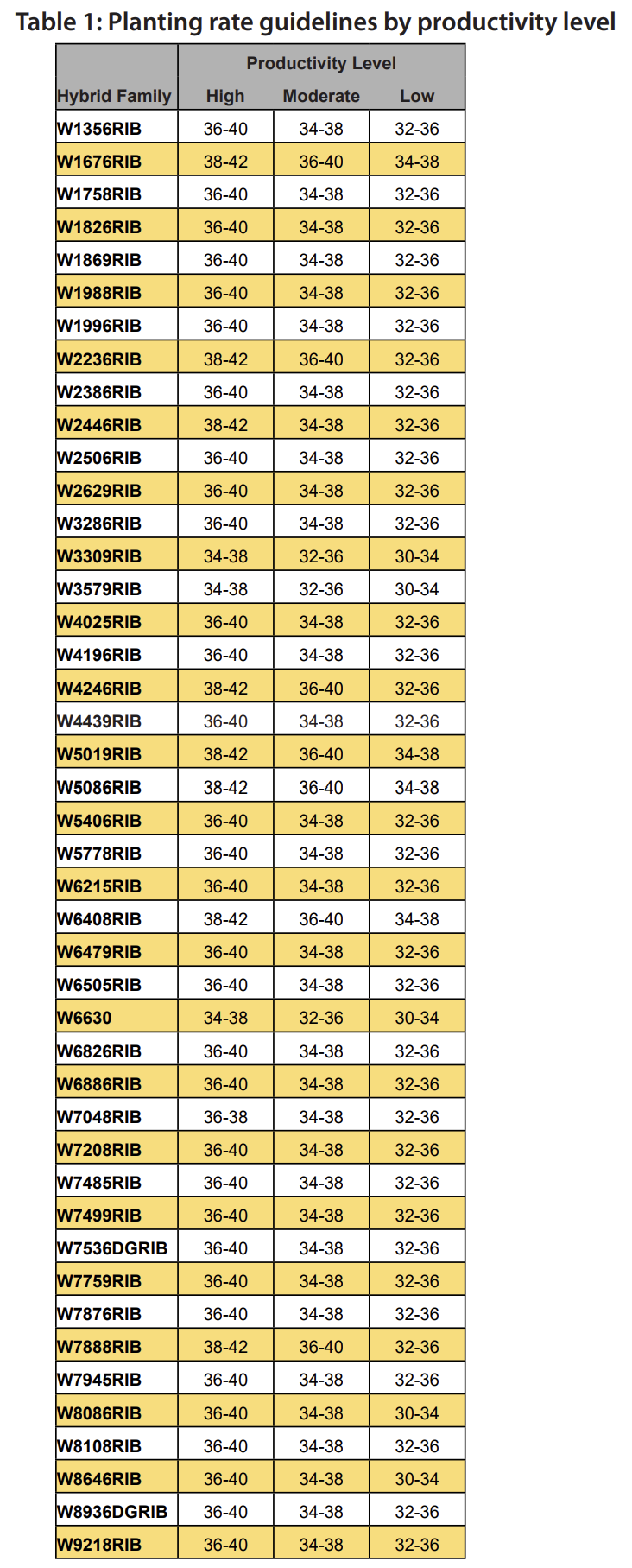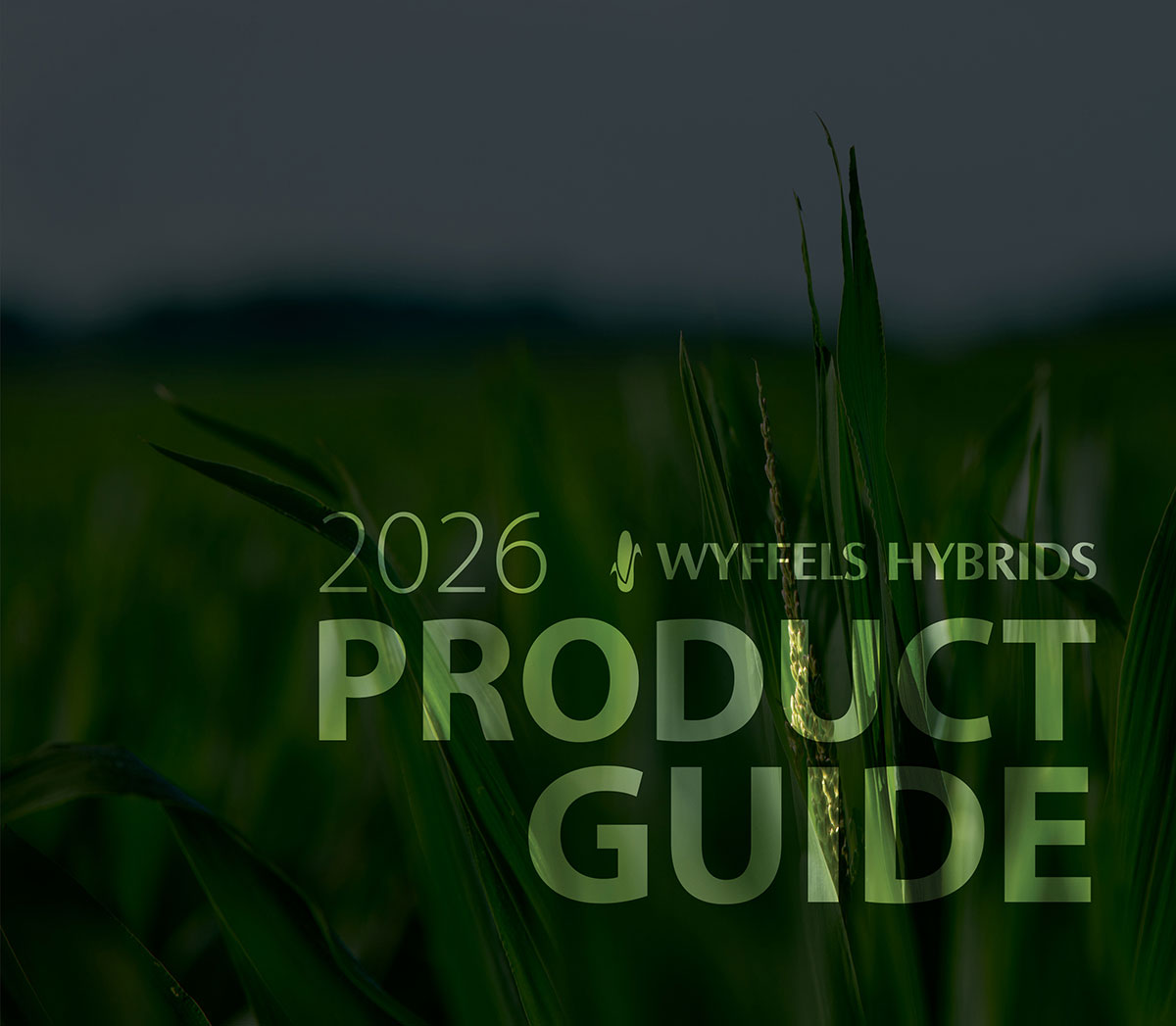Where It All Starts
Two of the most critical decisions a corn grower must make each year are choosing the best hybrid for each field, and determining the planting rate of each hybrid to maximize yield and return on investment.
Optimum planting rate is dependent on many factors such as hybrid, soil properties, soil nutrient levels and dynamic weather conditions. It’s a balance between maximizing the use of available light, nutrients and soil moisture without causing excessive competition that may impact yield or standability.
Corn growers should work with their Wyffels Seed Representative to find the right hybrid and planting rate for each field. This Between the Rows will provide information to help make a more informed decision.
Optimum Planting Rate on the Rise
Over the past several decades, higher plant populations have been one of the key factors responsible for greater corn yields. Wyffels has conducted trials demonstrating how hybrids of different eras perform at low (20K) and high (38K) populations (Figure 1).

Over the last 40 years, yields at low populations have increased at a rate of 1.4 bu/A while yields at higher plant populations have increased at nearly 2 times that rate (2.4 bu/A). These findings demonstrate the importance of the efforts of corn breeders in their mission to deliver the highest yielding corn hybrids. Corn breeders have effectively selected genetics more tolerant to stress, which allows modern hybrids to maintain ear size under higher populations.
These genetic advancements, along with improved management practices by corn growers, have been a key driving force behind the increase in corn yield over the last 50 years. Yield increases are due to more ears per acre, not more kernels per ear.
Planting Rate Response by Productivity Level
Wyffels annually evaluates how hybrids respond to a range of populations to determine the best planting rate for each hybrid. Hybrids are tested at populations ranging from 24,000 to 50,000 seeds/A in Wyffels replicated research sites and agronomic strip trials. In over 5,000 comparisons of 100+ hybrids, maximum yield was achieved at a planting rate of 37,400 seeds/A.
Locally, planting rates must take into account other factors like soil type, soil moisture, fertility, and general productivity level. Figure 2 illustrates how optimum planting rates increase as productivity levels increase. This data supports increasing planting rates in more productive fields or management zones, while reducing planting rates in the less productive areas. However, even in lower productivity environments, planting rates still need to be in the mid to upper 30’s.

To help corn growers determine optimum seed rates for Wyffels products, Wyffels corn breeders provide recommended planting rates for each hybrid at low, medium and high productivity levels (Table 1).

These recommendations factor in data that has been gathered for each hybrid family, combined with knowledge corn breeders have about how each genetic family performs in different environments, and lastly honed down based on first-hand observations of these hybrids in the field.
Manage to Maximize Production
Today’s hybrids are developed, tested and perform best at plant populations from 34,000-40,000 seeds/A. Growers can take advantage of the productivity of these hybrids by planting at recommended rates for each specific hybrid and field condition. In the current economic climate, growers will be tempted to cut costs, however cutting planting rates can limit yield and profit potential.
Planting rate is one factor that directly impacts yield and is well within producer control. Work with your Wyffels Seed Representative to create a plan for your farm to capture maximum yield and return on investment.
